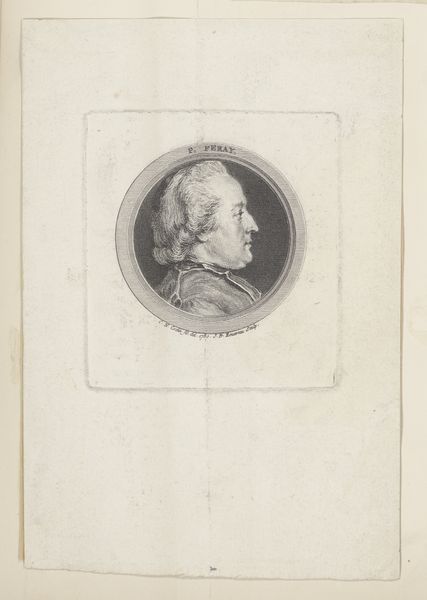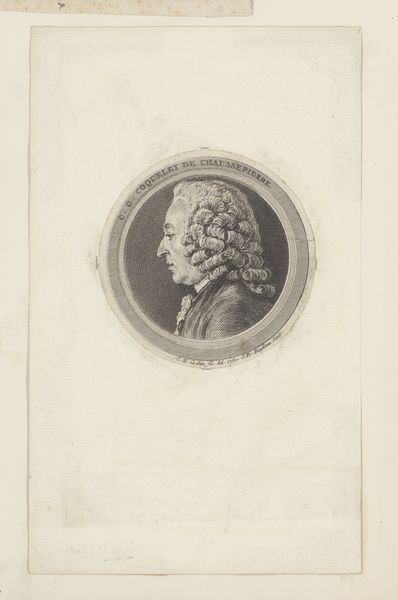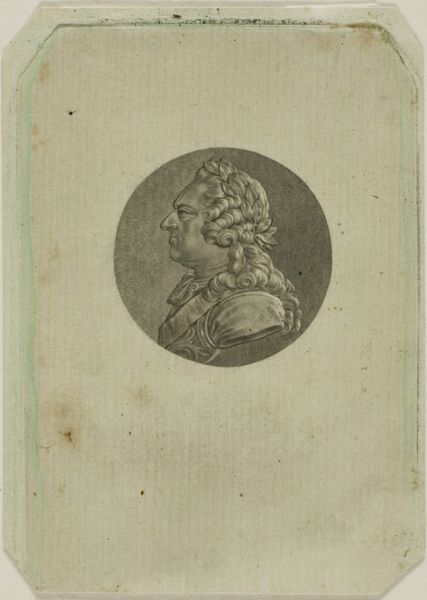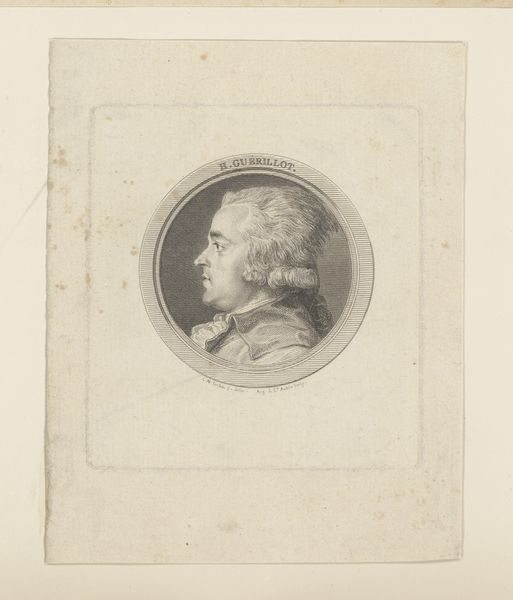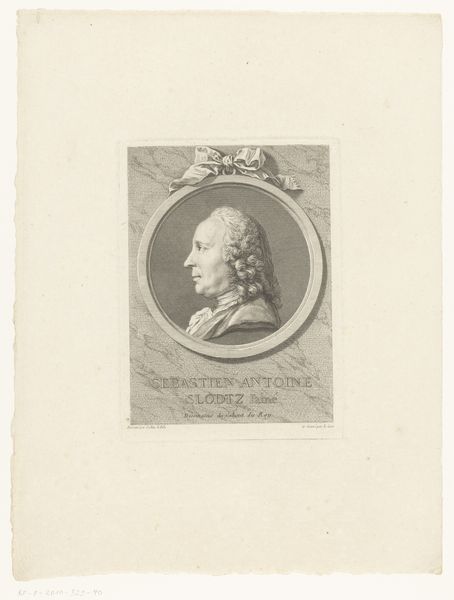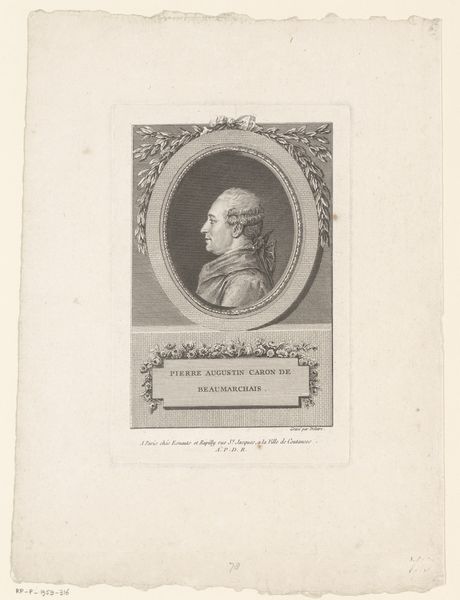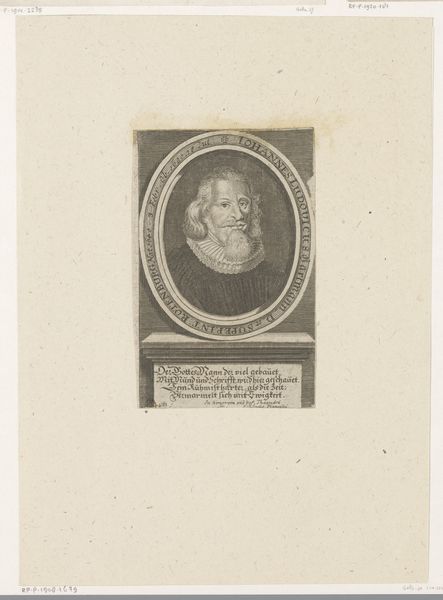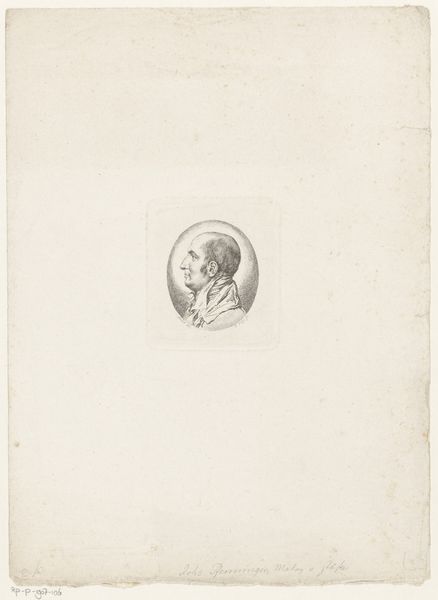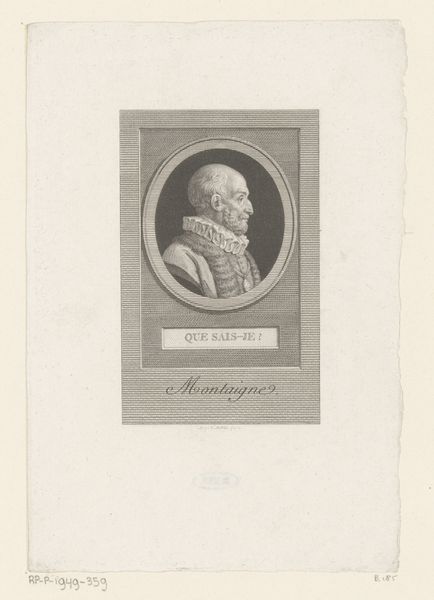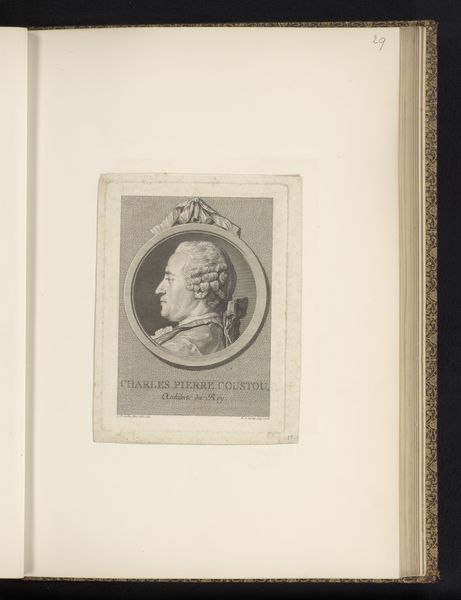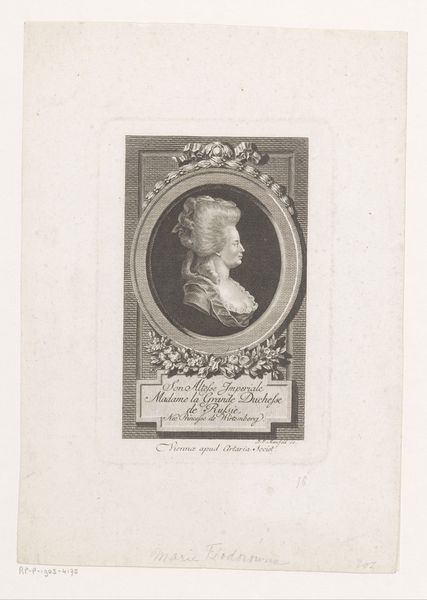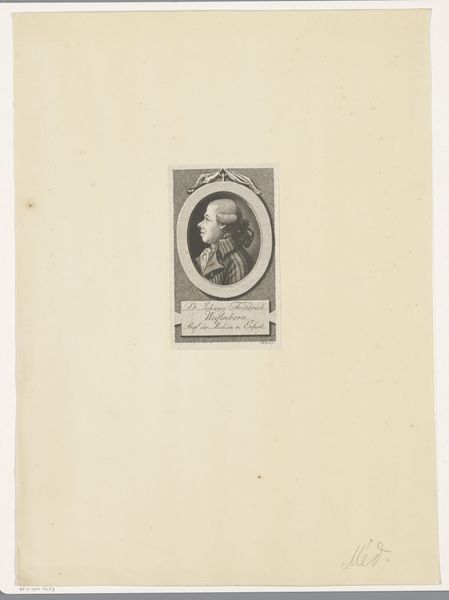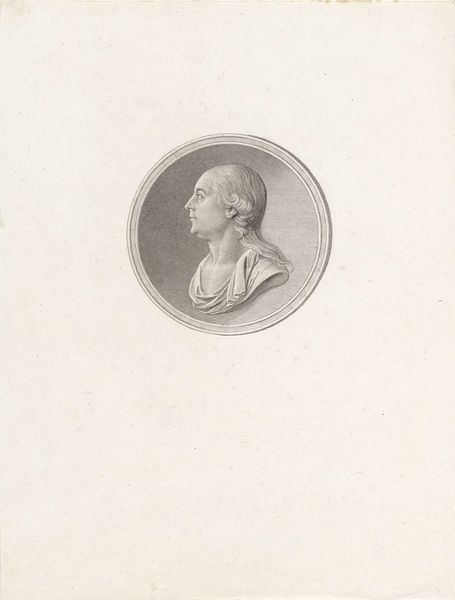
print, engraving
#
portrait
#
neoclacissism
# print
#
history-painting
#
academic-art
#
engraving
Dimensions: height 105 mm, width 99 mm
Copyright: Rijks Museum: Open Domain
This is a portrait of Joseph Treyer, made by Simon Charles Miger, sometime between 1736 and 1820. It's an engraving, a printmaking process where lines are incised into a metal plate, which is then inked and pressed onto paper. Notice the crispness of the lines, and the way Miger uses hatching to create a sense of volume in Treyer's face and wig. These details weren't achieved with a quick sketch; they resulted from skilled labor, and meticulous, repetitive work. Engraving was a commercial process, often used for reproducing images on a mass scale. This print might have been part of a series of portraits, sold to a wide audience. There's a fascinating tension here: the portrait memorializes an individual, yet it was produced through a process geared toward broader circulation, reflecting the intersection of art, craft, and commerce in the 18th century. Looking closely at materials and making helps us appreciate not only the skill of the artist, but also the social and economic context in which the work was created.
Comments
No comments
Be the first to comment and join the conversation on the ultimate creative platform.
